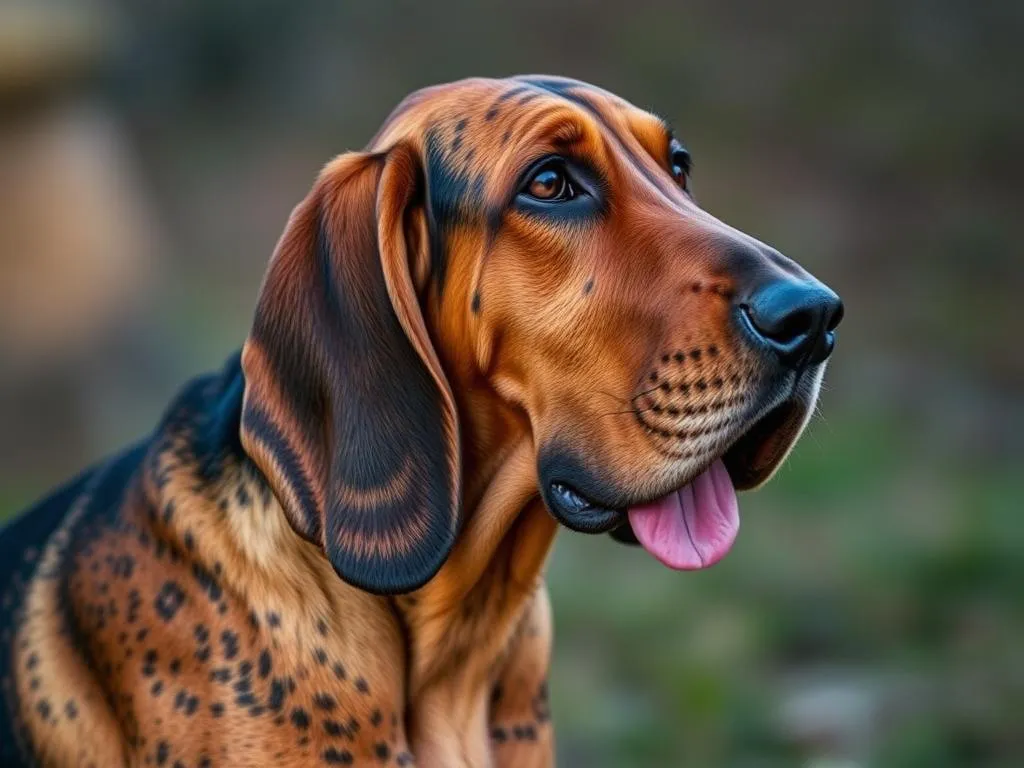
Introduction
Dog health care is a vital aspect of responsible pet ownership, encompassing everything from nutrition to regular veterinary visits. Understanding the specific needs of different breeds is essential for ensuring their well-being. One breed that stands out for its unique characteristics and historical significance is the Bloodhound. Known for their remarkable sense of smell and gentle temperament, Bloodhounds are beloved companions. However, potential owners often wonder, how long do they live? This blog post focuses on the Bloodhound lifespan, the factors that influence it, and how to enhance the health and happiness of these remarkable dogs.
Understanding Bloodhounds
Breed Characteristics
Bloodhounds are large, powerful dogs known for their distinctive appearance and gentle nature. They typically weigh between 80 to 110 pounds and stand about 23 to 27 inches tall at the shoulder. Their loose, wrinkled skin and long, droopy ears are not only endearing but also functional, helping to trap scent particles. The coat is short and can come in various colors, including black and tan, liver and tan, and red.
Temperamentally, Bloodhounds are known for their friendly and affectionate demeanor. They are great family pets, often displaying a playful and gentle disposition with children. However, they can also be quite independent and may require consistent training and socialization.
Historical Background
The Bloodhound’s history dates back over a thousand years, with origins tracing back to Belgium. Initially bred for tracking and hunting, these dogs were valued for their incredible sense of smell, which is unmatched in the canine world. Bloodhounds have been employed in search and rescue missions and are often used by law enforcement to track down missing persons or fugitives.
Common Health Issues
Like all breeds, Bloodhounds are prone to certain health issues. Some genetic predispositions include hip dysplasia, elbow dysplasia, and bloat. Their loose skin can also lead to skin infections if not properly cared for. Regular veterinary check-ups and being mindful of these common ailments can help ensure a longer, healthier life for your Bloodhound.
Bloodhound Lifespan: How Long Do They Live?
Average Lifespan of Bloodhounds
The average Bloodhound lifespan ranges from 8 to 12 years. While this is a general estimate, individual lifespans can vary based on several factors, including genetics, health care, and lifestyle.
Comparison with Other Breeds
When comparing the lifespan of Bloodhounds with similar breeds, such as the Basset Hound and the English Bulldog, Bloodhounds tend to have a slightly longer lifespan. Basset Hounds typically live around 10 to 12 years, while English Bulldogs often have a shorter lifespan of about 8 to 10 years. This makes the Bloodhound a relatively durable breed, although they still require attentive care to maximize their longevity.
Factors Affecting Bloodhound Lifespan
Genetics
The genetics of a Bloodhound play a crucial role in determining its lifespan. Responsible breeding practices can significantly reduce the risk of inheritable diseases. Prospective owners should seek reputable breeders who prioritize health screening and genetic testing in their breeding programs. A strong lineage can lead to a healthier, longer-lived dog.
Nutrition
Proper nutrition is fundamental for maintaining a healthy Bloodhound. A balanced diet that meets their nutritional needs is essential. High-quality dog food that contains essential nutrients such as proteins, vitamins, and minerals should be prioritized. Avoiding overfeeding is crucial, as Bloodhounds can be prone to obesity, which can significantly shorten their lifespan.
Regular Veterinary Care
Routine veterinary care is vital for ensuring a Bloodhound’s long and healthy life. Regular check-ups allow for early detection of potential health issues. Vaccinations and preventive measures such as flea and tick control are essential to maintain a robust immune system. Bloodhounds should also receive regular dental care to prevent periodontal disease, which is common in older dogs.
Exercise and Activity Levels
Bloodhounds thrive on regular exercise. While they are not as hyperactive as some breeds, they do require daily walks and playtime to keep them fit and mentally stimulated. Engaging in activities such as scent work, tracking, or obedience training can also enrich their lives and contribute positively to their health. A lack of exercise can lead to obesity and related health issues, which can adversely affect their lifespan.
Environment and Living Conditions
The living environment of a Bloodhound can significantly impact their overall well-being. They thrive in safe, spacious areas where they can roam and explore. A stimulating environment with opportunities for mental engagement, such as interactive toys or puzzles, can help keep them happy and healthy. Bloodhounds are social animals, and they benefit from companionship, whether from humans or other pets.
Signs of Aging in Bloodhounds
Physical Changes
As Bloodhounds age, they may exhibit several physical changes. Common signs include graying fur, especially around the muzzle, and changes in skin elasticity. You may also notice decreased mobility or stiffness, particularly after resting. Keeping an eye on their weight and maintaining a healthy body condition is essential, as weight gain can exacerbate mobility issues.
Behavioral Changes
Older Bloodhounds may also display behavioral changes. They might become less active or show less interest in play. Some dogs may develop anxiety or cognitive decline, leading to confusion or changes in their sleeping patterns. Understanding these changes is crucial for providing appropriate care and comfort.
Health Monitoring
Regular observation is essential for identifying health changes in aging Bloodhounds. Owners should monitor their dog’s behavior, appetite, and energy levels closely. If any alarming signs arise, such as sudden weight loss, lethargy, or changes in bathroom habits, consulting a veterinarian promptly is necessary.
Enhancing the Quality of Life for Senior Bloodhounds
Diet Adjustments
As Bloodhounds age, their nutritional needs may change. Senior dog food formulas are designed to support the health of older dogs, often containing lower calories and higher fiber to help manage weight. Additionally, supplements such as glucosamine and omega-3 fatty acids can aid in joint health and overall well-being.
Keeping Them Active
While senior Bloodhounds may not be able to engage in the same vigorous activities as when they were younger, gentle exercise is still important. Shorter walks, light play, and mental stimulation through puzzle toys can help keep them active without overexerting them. It’s vital to tailor exercise routines to their abilities and health status.
Regular Health Check-Ups
Continuing regular veterinary visits is crucial for senior Bloodhounds. These check-ups allow for monitoring of age-related health issues and early intervention when necessary. Common tests for older dogs may include blood work, urinalysis, and physical assessments to evaluate their overall health.
End-of-Life Care for Bloodhounds
Recognizing End-of-Life Signs
As Bloodhounds approach the end of their life, owners must be vigilant in recognizing signs of discomfort and decline. These may include changes in appetite, decreased mobility, and signs of pain or distress. Understanding when to seek euthanasia is a difficult but compassionate decision that may be necessary to prevent undue suffering.
Grieving and Mourning
The loss of a beloved pet is deeply emotional. Owners may experience a range of feelings, from sadness to guilt. It’s important to allow oneself to grieve and seek support from friends, family, or pet loss support groups. Sharing memories and honoring the pet’s life can be helpful in the healing process.
Honoring Their Memory
Finding ways to memorialize a beloved Bloodhound can also be comforting. Ideas include creating a scrapbook, planting a tree in their memory, or commissioning a piece of art that captures their spirit. Cherishing the time spent together can bring solace during the grieving process.
Conclusion
Understanding the Bloodhound lifespan and the factors that influence it is essential for responsible ownership. By focusing on nutrition, regular veterinary care, exercise, and creating a supportive environment, owners can ensure their Bloodhounds lead happy, healthy lives. With a lifespan of 8 to 12 years, Bloodhounds offer many joyful moments, making it vital to cherish each one. By prioritizing their health care, you can provide a loving home that enhances their quality of life during their time with you.









